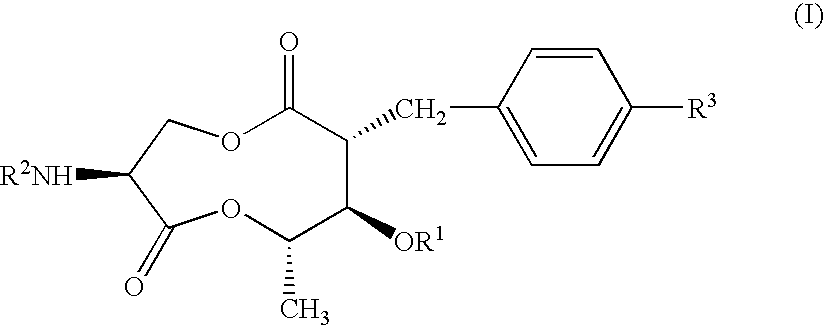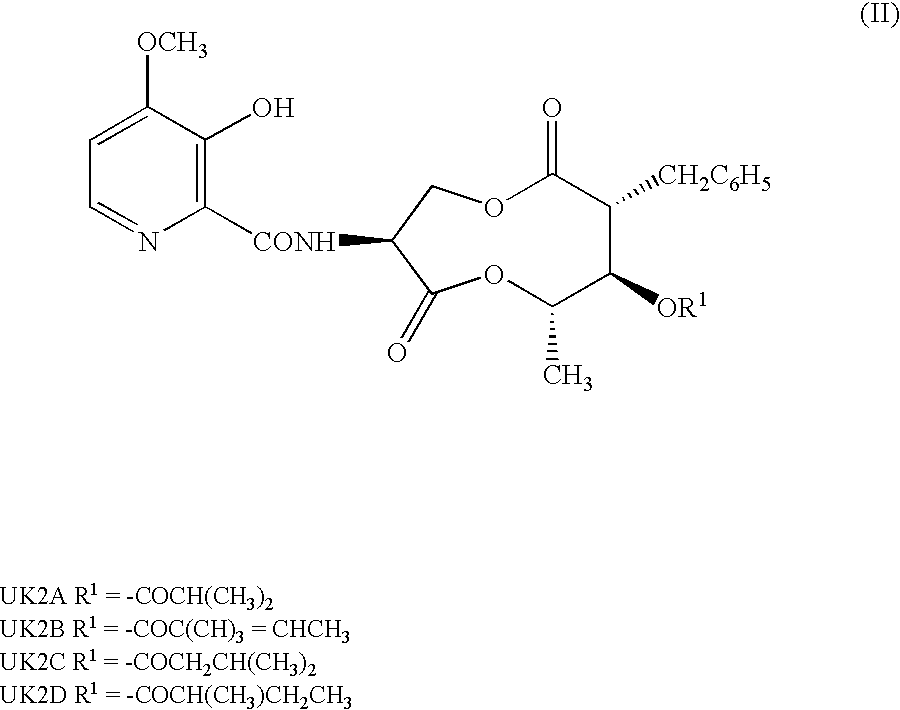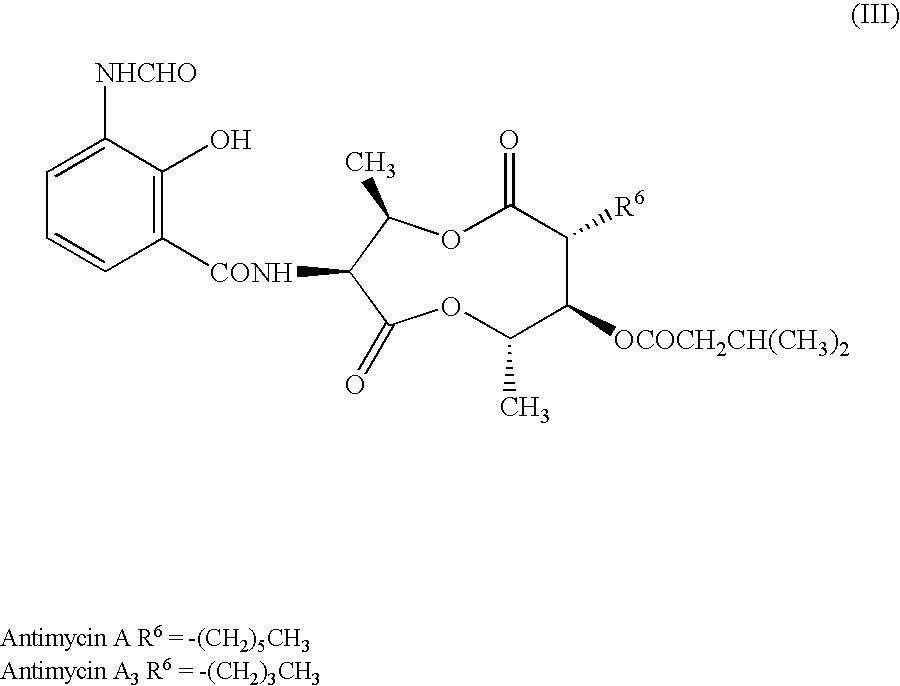Antifungal compound and process for producing the same
a technology of antifungal compound and process, applied in the field of new compound, can solve the problems of serious crop damage, fungi often bring about grave conditions in patients with lowered health, and injure the health of human beings and non-human animals, and achieve the effect of high photostability and potent antifungal activity
- Summary
- Abstract
- Description
- Claims
- Application Information
AI Technical Summary
Benefits of technology
Problems solved by technology
Method used
Image
Examples
example 1
(1)(2R,3R,4S,7S)-7-Amino-2-benzyl-5,9-dioxa-3-iso-butyryloxy-4-methyl-1,6-cyclononanedione; and (2) p-toluenesulfonate thereof
[0149]UK-2A (500 mg) was dissolved in 50 mL of methylene chloride. Pyridine (0.15 mL) and 395 mg of phosphorus pentachloride were added to the solution under ice cooling. The mixture was heated under reflux for 1.5 hr. The reaction solution was cooled to −30° C. Thereafter, 50 mL of methanol, which had been previously cooled to 0° C., was added to the reaction solution, and a reaction was allowed to proceed for 15 hr. Methylene chloride (200 mL) and 150 mL of saturated aqueous sodium hydrogencarbonate, which had been previously cooled to 0° C., were added thereto, followed by separation. The aqueous layer was extracted twice with 20 mL of dichloromethane. The combined organic layers were dried over magnesium sulfate, and concentrated under the reduced pressure. The residue was dissolved in 50 mL of ethyl acetate. A solution of 180 mg of p-toluenesulfonic acid...
example 2
(2R,3R,4S,7S)-7-Amino-2-benzyl-5,9-dioxa-3-isobutyryloxy-4-methyl-1,6-cyclononanedione tosylate
[0156]The title compound (yield 41%) was obtained in the same manner as in Example 1, except that isobutanol was used instead of methanol.
example 3
(2R,3R,4S,7S)-7-Benzyloxycarbonylamino-2-benzyl-5,9-dioxa-3-isobutyryloxy-4-methyl-1,6-cyclononanedione
[0157]UK-2A (100 mg) was dissolved in 10 mL of methylene chloride. Pyridine (32 mg) and 83 mg of phosphorus pentachloride were added to the solution under ice cooling. The mixture was heated under reflux for 1.5 hr. Next, the reaction solution was cooled to −30° C. Methanol (10 mL), which had been previously cooled to 0° C., was added thereto, and a reaction was allowed to proceed at room temperature for 3 hr. Methylene chloride (50 mL) and 50 mL of saturated aqueous sodium hydrogencarbonate, which had been previously cooled to 0° C., were added to the reaction solution, followed by separation. The aqueous layer was extracted twice with 20 ml of methylene chloride. The combined organic layers were dried over magnesium sulfate, and then concentrated under the reduced pressure. The residue was dissolved in 5 mL of methylene chloride. Pyridine (46 μl) and 84 μl of benzyloxycarbonyl ch...
PUM
| Property | Measurement | Unit |
|---|---|---|
| reaction time | aaaaa | aaaaa |
| reaction time | aaaaa | aaaaa |
| temperature | aaaaa | aaaaa |
Abstract
Description
Claims
Application Information
 Login to View More
Login to View More - R&D
- Intellectual Property
- Life Sciences
- Materials
- Tech Scout
- Unparalleled Data Quality
- Higher Quality Content
- 60% Fewer Hallucinations
Browse by: Latest US Patents, China's latest patents, Technical Efficacy Thesaurus, Application Domain, Technology Topic, Popular Technical Reports.
© 2025 PatSnap. All rights reserved.Legal|Privacy policy|Modern Slavery Act Transparency Statement|Sitemap|About US| Contact US: help@patsnap.com



